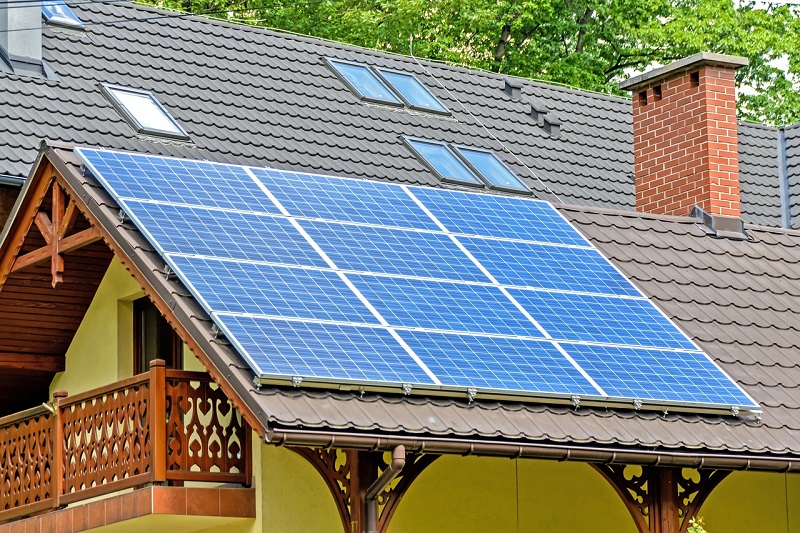Sustainability is a hot topic today. More people are becoming interested in living a “greener” lifestyle, and there are plenty of ways to do this. One way to make your home more sustainable is by following some simple best practices.

However, it demands awareness, engagement, and action to eliminate various methods and make your home more sustainable. Educate yourself and your family about sustainability to make informed decisions.
Use the following tips for maximum results:
1. Use Energy-Efficient Appliances and Sustainable Goods
It’s one of the easiest ways to achieve your sustainability goals. Energy-efficient appliances use less energy than traditional models, saving you money on your energy bills and helping reduce your carbon footprint.
Besides, they come with various features, including programmable settings and automatic shut-off that can make your life easier.
The beauty is that they have fewer emissions compared to traditional appliances. On the other hand, it’s advisable to buy sustainable home goods from reputable outlets.
The shops have skincare, cooking, and baby care items, among other sustainable products that lead to a better lifestyle. They have fewer health hazards than other processed goods on the market.
2. Switch to LED Light Bulbs
LED light bulbs are becoming increasingly popular because they use less energy than traditional incandescent bulbs.
They also last longer, so you’ll save money in the long run. If you’re looking for an easy way to make your home more sustainable, switching to LED bulbs is a great place to start.
Although they are brighter than traditional bulbs, they don’t produce as much heat that would make your home uncomfortable.
3. Install Solar Panels
Solar panels are a great way to reduce your reliance on fossil fuels and lower your carbon footprint. They can also save you money on your energy bills. If you’re interested in making a long-term investment in sustainability, solar panels are a great option.
However, they require a significant upfront investment. You should also ensure your home is suitable for solar panels before installing them, especially the roofing.
Ensure the weather around the home favors the solar panels, and the house sits in an area that gets plenty of sunlight.
4. Use Eco-Paints for Your Home
If you’re looking for an environmentally-friendly way to paint your home, consider using eco-paints made with natural ingredients and don’t contain harmful chemicals. They’re also non-toxic, so you can feel good about using them in your home.
Eco-paints often come in various colors so that you can find the perfect shade for your home.
5. Choose Sustainable Building Materials
When building or renovating your home, it’s important to choose sustainable building materials made from renewable resources and don’t damage the environment. Sustainable building materials serve various purposes, including insulation, flooring, and walls.
You can also find sustainable furniture made from sustainable materials. Consider re-using or selling remaining materials to sustainability sites.
6. High-Performance Windows
High-performance windows are a great way to reduce your energy consumption. They’re designed to keep your home cool in the summer and warm in the winter, so you won’t have to rely as much on your heating and cooling system.
They can also help reduce noise pollution and improve the overall appearance of your home. High-performance windows are more expensive than traditional windows, but they’re worth the investment if you’re looking for ways to make your home more sustainable.
7. Compost Your Food Waste
One of the best things you can do for the environment is to compost your food waste, reducing the amount of waste that goes into landfills. It also helps create nutrient-rich soil used to grow plants.
If you’re not sure how to compost, plenty of resources are available online. You need a small space in your backyard and some kitchen scraps and prepare your compost bin.
8. Use a Rain Barrel
A rain barrel is a great way to collect water for watering plants or washing your car. It’s a simple way to reduce your water consumption and save money on your water bill. You can find rain barrels at most home improvement stores.
Remember to choose one made from durable material so it will last for years. Also, remember to use a water filter to remove any impurities and microplastics from the water before using it.
Closing Thoughts
By following these simple tips, you can make your home more sustainable and reduce your impact on the environment. Most of the above suggestions don’t cost much money, so there’s no excuse not to implement them today.
Besides, it’s better to use money through research and attending sustainability lessons to save the planet than spend it on things that harm it. Health matters and you shouldn’t take sustainability lightly.
Related Posts
- 6 Ways You Can Cut Down Your Home’s Energy Consumption
- What are the Pros and Cons of Solar Tube Lighting in Homes
- All About Solar Panel Tiles and Shingles – Cost – Pros – Cons
- Save Your Solar Power: Maximize the Energy with These Simple Tips
- 7 Tips to Create a More Eco-Friendly Home or Apartment
- 6 Eco-Energy Solutions for Your Home to Save Money
Leave a Reply